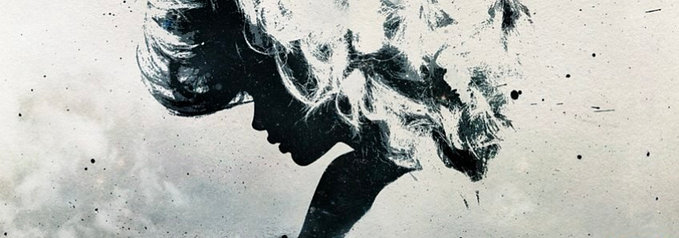Public Lands: America’s Other Best Idea
American novelist, environmentalist, and historian Wallace Stegner called National Parks “the best idea we ever had. Absolutely American, absolutely democratic, they reflect us at our best rather than our worst.” With all due respect to Yellowstone, the Grand Canyon, and Denali, Stegner was only half right. By limiting his accolades to just the 423 units of the National Park System (NPS), he forgot about the other 581 million acres of federally owned public lands across the country. Epics like White River National Forest, King Range National Conservation Area, and Glen Canyon National Recreation Area deserve at least as much love as their more well-known NPS sisters.

From Maine to Florida, Hawaii to Alaska, the federal government owns some 640 million acres of land, more than three and a half times the size of Texas, and makes nearly all of them available for some form of public use. Of that land, more than 110 million acres have been designated as “wilderness,” protecting them from development, preserving them for wildlife habitat, and providing a significant counter to global warming. Millions more acres are subject to easements protecting forests, grasslands, and watersheds.
Public lands are not just natural treasures, but economic assets as well. Though fracking and mining often dominates the conversation, recreation actually produces a larger economic impact than all mineral extraction activities combined and supports 4.6 million jobs nationwide. In fact, about 2% of the United States’ Gross Domestic Product is directly attributable to recreation activities on public lands. Livestock grazing, which is authorized on some 155 million acres of Forest Service and Bureau of Land Management (BLM) land, and logging are also significant sources of public land’s economic output.

The history of public lands is deeply entwined with that of our country’s. Following the Revolutionary War, under the Articles of Confederation, states were required to cede their land claims west of the Ohio River to the new Continental government in exchange for it assuming the new states’ wartime debts. The Land Ordinance of 1785 and the Northwest Ordinance of 1787 gave the Continental Congress the authority to manage western lands without interference from state governments. Controversy over these laws led directly to the 1787 Constitutional Convention and the modern American federal government. Under the new constitution, Congress was empowered “to dispose of and make all needful Rules and Regulations respecting the Territory or other Property belonging to the United States.” To this day, Article IV, Section 3, Clause 2 has been consistently interpreted by courts to form the legal basis for our public lands.
Though the Articles of Confederation ended in failure after only eight years, the Land Ordinance’s impact proved longer lasting. Modern plot books still show the 6-mile by 6-mile square townships, comprised of 36 sections of 640 acres, “checkerboard” pattern first authorized in 1785. Later, the Louisiana Purchase, negotiated by President Thomas Jefferson, doubled the size of the United States and added 530 million acres of land to the public domain. Further land purchases from Mexico, Britain, and Russia would add hundreds of millions of additional acres. By the late nineteenth century, much of this land had been opened up to development by homesteaders, ranchers, and miners. Between 1868 and 1904, nearly 270 million acres were given to settlers for only nominal filing fees. Public lands were also crucial to the development of the national transportation network, with 130 million acres granted to builders to subsidize construction of new rail lines.
In an effort to retain some of these recently acquired lands, Congress established Yellowstone National Park in 1872, creating the first protected public land set aside for “the benefit and enjoyment of the people” by a national government anywhere in the world. President Theodore Roosevelt, though, is remembered as the true architect of America’s public lands. During his time in the White House, he doubled the number of national parks; created 18 national monuments (including the Grand Canyon, Devils Tower, and Petrified Forest); and set aside 4 national game refuges, 51 federal bird sanctuaries, and more than 100 million acres of forest land. Most importantly, he signed the Antiquities Act into law, creating a permanent avenue for federal land protection. Since 1906, 16 Presidents have used it to declare new national monuments from Maine to Hawaii, leading the National Parks Conservation Association to call it “one of our nation’s more important conservation tools.”

The Wilderness Act of 1964 went on to create the National Wilderness Preservation System which protects “wilderness areas.” It defined wilderness as “an area where the earth and community of life are untrammeled by man, where man himself is a visitor who does not remain” and “an area of undeveloped Federal land retaining its primeval character and influence, without permanent improvements or human habitation, which is protected and managed so as to preserve its natural conditions.” No commercial enterprises, permanent roads, or manmade improvements, with only limited exceptions, are permitted in wilderness areas, and motor vehicles, motorized equipment, motorboats, landing aircraft, and mechanical transportation (including bikes) are forbidden in these areas.
Upon signing the Wilderness Act into law, President Lyndon Johnson said “if future generations are to remember us with gratitude rather than contempt, we must leave them something more than the miracles of technology. We must leave them a glimpse of the world as it was in the beginning, not just after we got through with it.” He couldn’t imagine how right history would prove him. Today, Boundary Waters Canoe Area in Minnesota, Alpine Lakes Wilderness in Washington, and Maroon Bells-Snowmass Wilderness in Colorado are just three examples of the magnificent spaces which have been protected for future generations under the Wilderness Act.
Protecting and maintaining public lands, though, is not merely the federal government’s job. Since 1994, the last Saturday of September marks the largest volunteer event on public lands. This year, over 50,000 volunteers participated in restoration and improvement projects in parks and monuments from Arizona’s Vermilion Cliffs National Monument to Maine’s Rachel Carson National Wildlife Refuge. Countless local, regional, and national non-profits work year-round to preserve these natural wonders.
Not all public lands are left untouched by human development. Over 120 renewable energy projects on BLM land have a combined power-generating capacity of more than 12,000 megawatts. 122 of the 473 commercial ski areas in the United States sit on Forest Service land and serve about half of the nation’s skiers. Some of the nation’s most advanced military technologies are tested on (or above) public lands. 180 million Americans get their drinking water from public lands (and the Arapaho and Roosevelt National Forest holds the headwaters of Clear Creek, which is used to brew Coors Beer). Many festivals and races — think Burning Man in the Black Rock Desert-High Rock Canyon Emigrant Trails National Conservation Area or Speed Week at the Bonneville Salt Flats — take place on public lands every year. A quarter of the country’s sheep spend part of their lives grazing on public lands and more than 2 billion board feet of wood is harvested from public lands each year. Royalties, leases, grazing fees, and special use permits make the Department of Interior the second largest source of federal revenue after the Interior Revenue Service.

Whether you’re a hunter, snowmobiler, hiker, climber, bird watcher, skier, rafter, equestrian, angler, or just someone who enjoys a good campfire on a cool fall evening near a high alpine lake, public lands offer countless opportunities for outdoor recreation. If you’re reading this on paper, wearing wool, sitting on a wooden chair, or drinking a cold one, you too might be enjoying public lands right now. If you’re in one of the 50 states or any of the territories, you probably rely on nearby public lands for drinking water or power. That’s why, from the majestic heights of Colorado’s fourteeners, to the depths of the outer-continental shelf, to the vast expanses of the Alaskan tundra, America’s public lands, not only our National Parks, just might be the best idea this country has ever had.
Nicholas Monck is a graduate of the University of Colorado Law School. He also received an Energy, Environmental, and Natural Resources Law and Policy Certificate and a Graduate Renewable Energy Certificate from the University of Colorado. He has previously written about urban planning in the University of Colorado Law Review. Opinions expressed are his own and do not represent the views of his employer.










